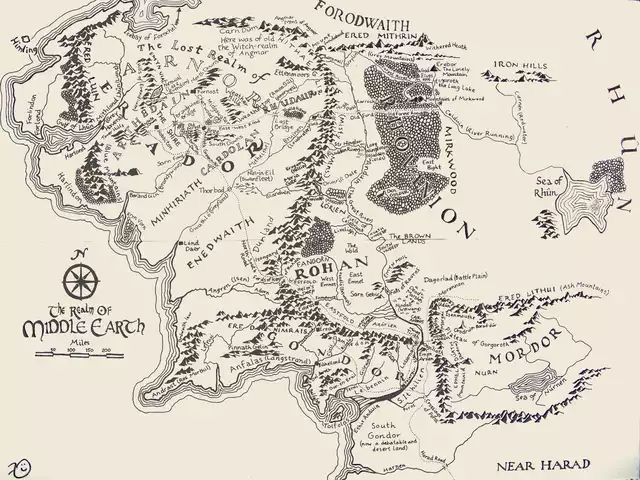J.R.R. Tolkien Didn't Write A Book — He Created A World
The Lord of the Rings isn't about characters. It's about their world.
Hey folks, welcome to the inaugural issue of Back Blurb! I’ve been preparing this project for a while, so I’m thrilled it’s finally launch time.
Each article will delve into a unique literary feature — a complex character arc, a cleverly used cultural reference, or another small yet significant literary device that elevates a good book into a masterpiece. By focusing on these distinct elements, we can enhance our understanding and enjoyment of the book, and also have a lot of fun in the process.
You can support Back Blurb by following the publication on Instagram, sending this article to a friend, and subscribing (if you haven’t already).
Happy Reading! — Joe
After several years of intermittent reading, I finally completed The Lord Of The Rings. There's not much I can say about this classic tale that hasn't already been said over the past century. Instead, I'd rather focus on the author and how his obsession with his world of Middle Earth produced one of the greatest stories ever told and birthed the fantasy genre.
This may be a contentious view, but I believe the true essence of Tolkien’s work lies in the appendixes. These are not mere add-ons, but rich troves of information akin to the depth found in non-fiction history books. They unveil the languages of various races, a history that spans millennia beyond the LOTR narrative, maps of Middle Earth, and everything a Tolkien enthusiast could desire. This content is the lifeblood of Tolkien's magnum opus, not just forgettable trivia to satisfy fans like the post-credit scene in a Marvel movie.
As I made my way through the appendix, learning about the rituals of ent life and the genealogy of obscure Gondorian kings, Tolkien’s purpose revealed itself to me. I don’t believe Tolkien began writing to detail Frodo’s quest to destroy the ring but to create a world that was as deep and nuanced as our own. Instead of prioritizing the peculiarities of a specific character or location, Tolkien concentrated on building a world with complex history, lively culture, and agonizing conflicts. From the vivacious and cruel world of Middle Earth, the story of the fellowship arose. Once their interests and habitats were established in “historical” fact, Tolkien only had to put pen to paper and guide the characters as they followed their natural paths.
Not only did Tolkien’s world-driven approach create an infinitely enjoyable work for avid readers and inspiration for aspiring authors (myself included), but it also provided a valuable lesson for literary enthusiasts. Writers don't need to go to the extreme depth Tolkien did in creating backstory, but our work will be better if we realize that a world with character creates characters worth investing in. Readers will appreciate rich detail and backstory on their own, while the characters that emerge from a living, breathing world will have stories worth retelling for centuries to come.



First, great opening piece from another Tolkien fan.
Second, you're not wrong about Tolkien. Tolkien's primary work about Middle-Earth actually wasn't the Lord of the Rings, it was the Silmarillion. He spent his entire life writing it and even when he died, he was still making changes to it (his son Christopher had to essentially put together a completed work). Tolkien literally built the world first and put the characters and the story in later.